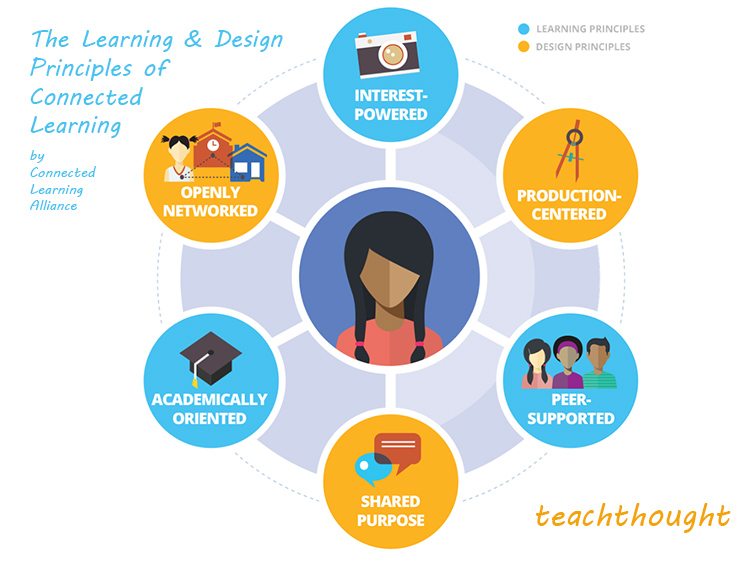
Dated Thinking: Schools Continue To Struggle With These 3 Crucial Ideas
by Terry Heick
As education seeks to change, there are a few ideas that continue to challenge its progress. If and when it can wrap its head around these ideas, progress has the chance to occur with far less resistance.
Idea 1: Schools must compete for clients.
More often than not, educators select the technology platforms and tools (and thus the domain) of learning, and force the students to use them rather than understanding the needs of learners first, and then finding the appropriate tech to support those needs. While you don’t have to blindly adopt, you can adapt your tools, bias, language, and platforms. But doing this also means that you must first understand the tools’ strengths.
Using apps, learning management systems, social media, video streaming, or video games in a learning experience is only as useful as the nature of and reasons for that integration. Beyond initial credibility with learners or the buzz of a new tech toy, consider what is gained with the implementation. Technology is powerful. The question is, what is it doing powerfully? Promoting understanding, or distracting from knowledge-building?
Traditionally, formal education has required learners to come to the content via well-sequenced instruction, charismatic teachers, or dogged determinism on the part of the learner. As learners have access to more diverse forms of informal collaboration through social media platforms, as well as access to motherlodes of information, this pattern must change in form and tone. It is now possible to place learners, learner pathways, and learner collaboration on full display, removing institutionally-centered ideas of compartmentalized content areas, teacher knowledge, and staid ‘learning targets.’
A shift? Schools must compete for clients–and students are the clients. Capture their imagination. Know their needs. Serve them. Lead them. Inspire them.
Or risk losing them.
Classroom Strategies
1) Use powerful, relevant media forms — music and video, for example.
2) Allow students to self-select their group members, create their own rubrics, source their learning materials, or even plan lessons.
3) Use feedback systems, grading, assessment forms, and other aspects of instructional design toward which your students seem to gravitate. Often students resist not the content, but the form.
Idea 2: The classroom is just the starting point.
And a pretty impotent one at that.
Reimagining a building’s physical space as simply a physical meeting point can improve community and global awareness. This in and of itself — if you can truly manage it in daily practice — will enable countless other less visible but crucial adjustments to the learning process. In this way, through the application of technology, digital media, and social media, the walls of all buildings become transparent.
Consider how you’d plan a learning experience if you had no classroom. How would it be different? Now, consider that you do, in fact, have to meet tomorrow morning in a small room with concrete floors. Where do you go from there — if that classroom is just a starting point? A modern curriculum can’t be created or implemented sitting in a room, no matter the miracle of technology.
Classroom Strategies
1) Communicate in person with authentic audiences in the community.
2) Use project-based learning or problem-based learning to literally deliver products and solutions that address ‘real-time’ local problems and issues.
3) Move to other classrooms to collaborate with other classes in other content areas.
Idea 3: What students do matters more than what they know.
Learners are incredibly creative, curious, social, and ambitious. The issue is often their application of these talents to resist the formal learning process. ‘Globalization’ is first and foremost about awareness, then application. Creating informal learning ‘areas’ for students to resist, reject, rebel, repurpose and rethink is every bit as powerful as even the best-planned instructional sequence.
Digital and social media benefit from so much ‘hands-on’ time that learning — in one form or another — is omnipresent. Figuring out where and how, and using this knowledge to your advantage, is the next step. What are “users” of information doing naturally without my express instruction? What is happening with processes and information when the teacher ‘isn’t looking’? (And if the answer is nothing, what does that tell us?)
Project-based learning also honors the concept of ‘play,’ where learning is not tightly sequenced and scripted, but organic, and learners begin learning to manage their own time, focus, and intellectual and creative output. Further, being connected matters. When students connect with anything beyond the teacher and the report card, learning instantly becomes messier, and more authentic. Included here is for everything the student says and does and writes and creates and reads to have a clear sense of purpose.
Classroom Strategies
1. Use project-based learning that provides multiple potential learning paths, and that are open-ended.
2. Gamify your classroom or curriculum. Establish leaderboards, offer perks to unlock via task completion, and make otherwise subtle steps of the learning process more visible.
3. Use digital and social platforms for projects. These encourage students to ‘play’ with tools and features that are natural to them.
Dated Thinking: 3 Crucial Ideas That Schools Continue To Struggle With

